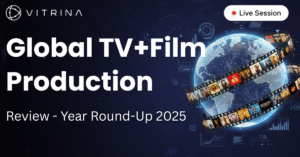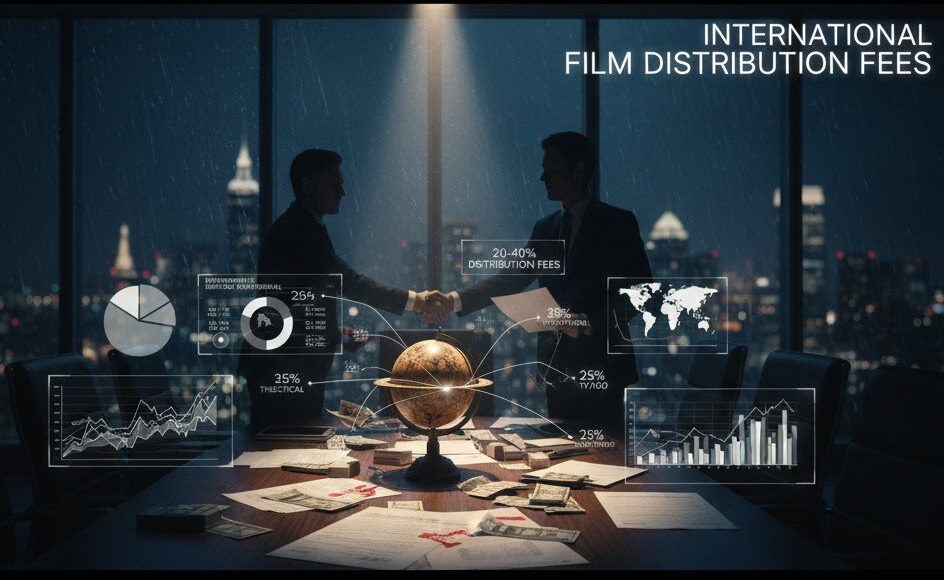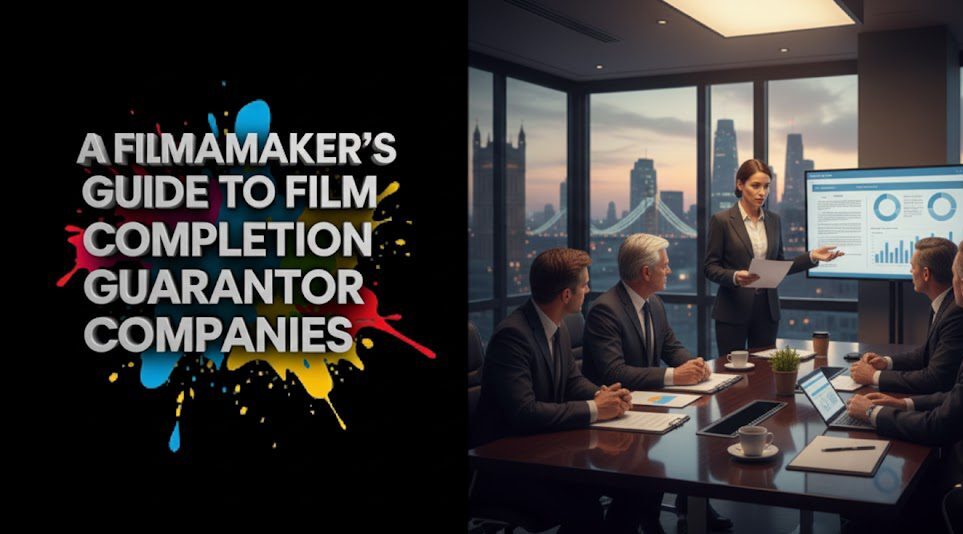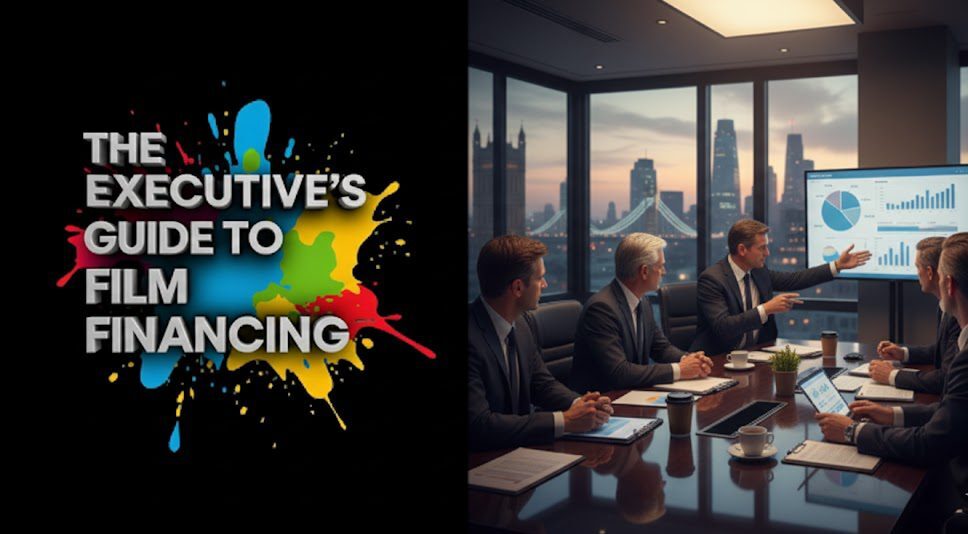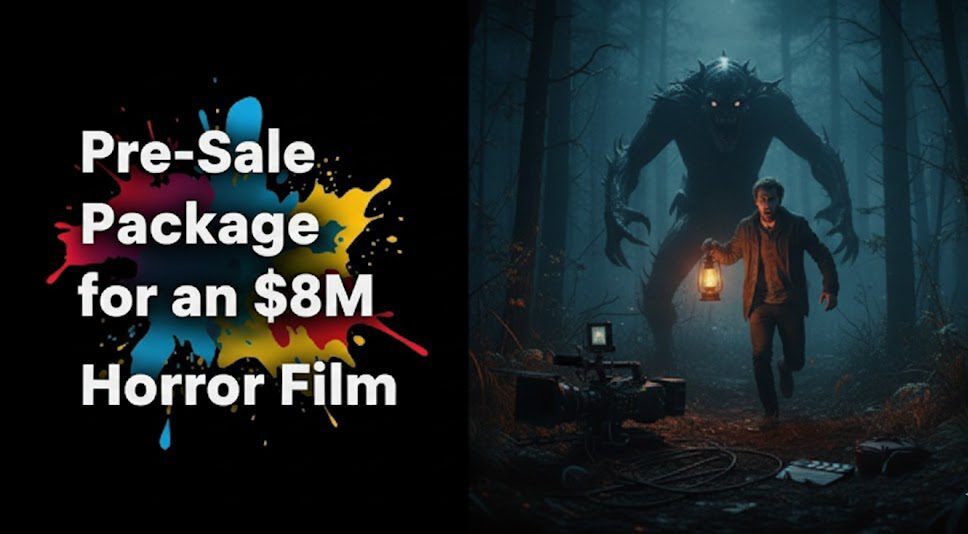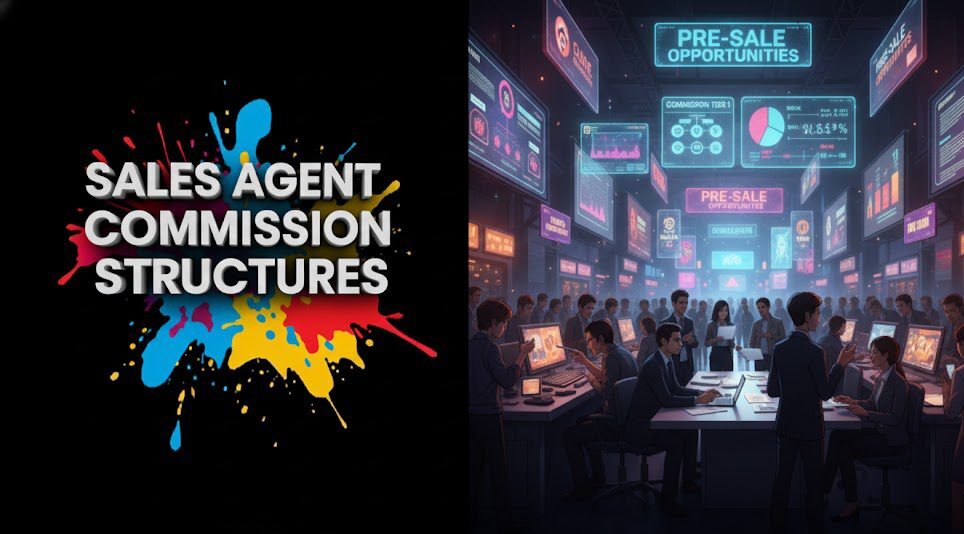Introduction
You’ve poured your creative vision into making a film. But in today’s crowded content landscape, a great film alone isn’t always enough to guarantee it gets seen or sold. Effective film marketing for distribution is the crucial bridge connecting your finished movie to both the industry buyers who can acquire it and the audiences who will ultimately watch it.
This guide is for filmmakers, producers, and marketing managers looking to strategically promote their film for sales and widespread viewership. We’ll cover everything from crafting an irresistible movie press kit and developing a killer film trailer strategy, to leveraging social media for film distribution, fostering audience engagement for films, generating essential film publicity, and effectively positioning your film for buyers. Let’s make sure your film gets the attention it deserves!
Table of content
- Introduction
- Key-Takeaways
- Understanding Film Marketing’s Dual Role: Buyers vs. Audiences
- Foundational Marketing Materials: Your Film’s First Impression
- Digital Strategies: Social Media, Websites, and Audience Engagement
- Publicity and PR: Generating Buzz and Credibility
- Positioning Your Film for Buyers: Making the Sale
- Conclusion
- FAQs
Key Takeaways
| Marketing Aspect | Core Importance |
|---|---|
| Dual Focus | Film marketing for distribution targets both B2B (buyers, distributors, sales agents) and B2C (end audiences). |
| Essential Materials | A professional movie press kit, compelling trailer(s), strong key art (poster), and a clear synopsis are foundational. |
| Digital Strategy | Effective use of social media for film distribution, a film website, and email marketing are vital for engagement and awareness. |
| Publicity & PR | Generating positive film publicity through reviews, interviews, and festival buzz significantly boosts a film’s profile. |
| Positioning for Buyers | Clearly articulating your film’s unique selling propositions (USPs), target audience, and market potential is key to attract acquisition interest. |
How Do You Effectively Promote Your Film for Sales?

Understanding Film Marketing’s Dual Role: Buyers vs. Audiences

Effective film marketing for distribution operates on two crucial fronts simultaneously. First, you need to market your film to the industry – the sales agents, distributors, and platform acquisition executives who will actually buy the rights to your film (B2B marketing). Second, you (or your eventual distributor) need to market the film to the end consumers – the audience who will pay to watch it (B2C marketing). While these efforts overlap, they often require different messaging and materials. Successfully promoting your film for sales involves understanding how to appeal to both these critical groups.
B2B Marketing: Appealing to Sales Agents, Distributors, and Platforms.
When marketing to industry professionals, your focus should be on demonstrating your film’s commercial viability and artistic merit. They want to know:
- What is the film and who is it for? (Clear genre, logline, target audience).
- What are its Unique Selling Propositions (USPs)? (e.g., notable cast, acclaimed director, unique concept, festival awards, strong reviews).
- What is its market potential? (Comparable film successes, potential for specific territories or platforms).
- Is the film well-made and deliverable? (Professional quality, clear chain of title).
- What marketing assets are available? (Strong trailer, poster, stills).
Materials for B2B include detailed pitch decks, sales sheets, and access to secure screeners. The goal is positioning your film for buyers as a smart acquisition.
B2C Marketing: Engaging and Exciting Your Target Audience.
Once a distributor is on board (or if you’re self-distributing), marketing shifts towards attracting the end viewer. This involves:
- Creating Awareness: Letting your target audience know your film exists and when/where they can see it.
- Generating Excitement and Desire: Making them want to watch your film through compelling trailers, engaging social media content, and positive word-of-mouth.
- Highlighting Emotional Hooks and Entertainment Value: Appealing to what audiences look for in a movie experience.
- Call to Action: Encouraging them to buy a ticket, rent/buy online, or subscribe to a service.
B2C marketing utilizes consumer-facing trailers, posters, social media campaigns, advertising, and public relations efforts focused on audience engagement for films.
How early marketing efforts can influence sales prospects.
Even before a distributor is attached, early marketing efforts aimed at building audience awareness and critical buzz can significantly enhance your film’s appeal to buyers. If you can demonstrate that an audience already exists for your film (e.g., through a successful crowdfunding campaign, strong social media following, or festival awards), it reduces the perceived risk for distributors. Positive film publicity from early reviews or festival screenings can be a powerful sales tool. Therefore, a smart film marketing for distribution strategy often starts by cultivating audience interest well before the sales process begins in earnest.
| Marketing Focus | Target | Key Message | Primary Tools |
|---|---|---|---|
| B2B (To Buyers) | Sales Agents, Distributors, Platforms | Commercial viability, market fit, quality. | Pitch decks, sales sheets, secure screeners, market attendance. |
| B2C (To Audiences) | End Viewers / Consumers | Entertainment value, emotional connection, must-see urgency. | Trailers, posters, social media, advertising, PR. |
A comprehensive strategy addresses both aspects to effectively promote your film for sales and viewership.
Foundational Marketing Materials: Your Film’s First Impression
Before you can effectively engage in film marketing for distribution or attempt to promote your film for sales, you need a toolkit of professional, compelling materials. These assets are often the first encounter a buyer or potential audience member will have with your film, so they need to make a strong positive impression. From a comprehensive movie press kit to a captivating trailer, these foundational elements are non-negotiable for anyone serious about selling and distributing their film.
1. The Essential Movie Press Kit (EPK).
An Electronic Press Kit (EPK) is a digital package containing all the essential information and assets about your film. It’s a vital tool for both press and industry contacts. A good EPK typically includes:
- Synopsis: Short, medium, and long versions.
- Logline: A concise, catchy one-sentence summary.
- Cast and Crew Biographies & Headshots.
- Director’s Statement: Insights into the film’s vision and creation.
- Production Notes: Interesting details about the making of the film.
- High-Resolution Stills: Professionally shot images from the film.
- Poster Artwork: High-resolution version of your key art.
- Trailer Link(s).
- Technical Specifications: Runtime, aspect ratio, sound format, etc.
- Contact Information: For the filmmaker, producer, or sales agent.
- Festival Laurels and Awards (if any).
- Positive Reviews or Quotes (if any).
Your movie press kit should be well-organized, easy to navigate, and visually appealing.
2. Crafting a Compelling Film Trailer Strategy.
A trailer is arguably your single most important marketing tool. You might even need different versions:
- Sales/Industry Trailer: May be slightly longer, highlighting key selling points, cast, and potential market appeal for buyers.
- Theatrical/Consumer Trailer: Shorter, faster-paced, focused on creating excitement and emotional engagement for audiences.
- Teaser Trailer: A very short (30-60 second) trailer released early to generate initial buzz.
An effective film trailer strategy considers the target audience for each version and aims to leave them wanting more. Invest in professional editing and sound design for your trailers.
3. Designing Striking Key Art (Poster) and Visuals.
Your film’s poster (key art) is its visual calling card. It needs to:
- Grab attention instantly.
- Clearly communicate the film’s genre and tone.
- Feature key imagery or talent in an appealing way.
- Include the title, tagline, and any important billing/credits.
- Work well in various formats (print, digital, social media thumbnails).
Invest in professional graphic design for your key art. Consistent branding across all visuals is also important.
4. Writing a Powerful Synopsis and Logline.
These written summaries are crucial for quickly conveying what your film is about:
- Logline: A single, compelling sentence that encapsulates the core concept, protagonist, conflict, and stakes. (e.g., “A reclusive millionaire creates a theme park of living dinosaurs, but chaos erupts when the prehistoric creatures escape.”)
- Synopsis: A concise summary of the plot (usually 1-3 paragraphs for a short version, up to a page for a longer one). It should engage the reader without giving away too many spoilers.
These will be used in your EPK, on websites, in festival submissions, and in pitches.
| Marketing Material | Primary Purpose | Key Elements |
|---|---|---|
| Movie Press Kit (EPK) | Provide comprehensive info to press & industry. | Synopsis, bios, stills, trailer, director’s statement. |
| Film Trailer(s) | Generate excitement, convey tone & story. | Strong visuals, compelling narrative arc, clear call to action (implied). |
| Key Art (Poster) | Create visual identity, attract attention. | Striking design, clear genre communication, title, tagline. |
| Logline & Synopsis | Quickly communicate film’s core concept & plot. | Concise, engaging, informative. |
These foundational materials are essential for any effective film marketing for distribution effort.
Digital Strategies: Social Media, Websites, and Audience Engagement
In the digital age, a robust online presence is indispensable for successful film marketing for distribution. Leveraging social media for film distribution efforts, creating a dedicated film website, and actively fostering audience engagement for films online can significantly boost awareness, build a fanbase, and even attract the attention of potential buyers. These digital strategies are often cost-effective ways to promote your film for sales and viewership, especially for independent productions.
Leveraging social media platforms effectively (Instagram, X, Facebook, TikTok).
Choose platforms where your target audience spends their time:
- Content Strategy: Share behind-the-scenes content, stills, short clips, Q&As with cast/crew, user-generated content contests, and release updates. Tailor content to each platform’s strengths (e.g., visual for Instagram, short-form video for TikTok).
- Consistent Branding: Use your film’s key art and a consistent tone of voice across all platforms.
- Hashtag Strategy: Use relevant and trending hashtags to increase discoverability.
- Engage with Your Audience: Respond to comments and messages, run polls, and foster a sense of community.
- Targeted Advertising: Use social media ad platforms to reach specific demographics and interest groups.
Active and authentic engagement is key for social media for film distribution success.
Creating a dedicated film website and its role.
Your film’s website serves as a central hub for information and engagement:
- Key Information: Host your EPK, trailer, synopsis, cast/crew details, screening times/locations (once available), and links to buy/rent.
- Brand Control: You control the narrative and visual presentation of your film.
- Email List Building: Encourage visitors to sign up for updates, creating a direct line of communication with interested fans.
- SEO (Search Engine Optimization): Optimize your site so people searching for your film (or related keywords) can find it easily.
- Potential for Direct Sales/Streaming: Some filmmakers host their own VOD players or e-commerce for merchandise.
A professional-looking website adds credibility to your film marketing for distribution efforts.
Building and nurturing an online community for audience engagement.
True audience engagement for films goes beyond just posting content; it’s about building a community:
- Foster Two-Way Communication: Ask questions, solicit opinions, and make your audience feel heard.
- Exclusive Content for Fans: Offer early looks, special Q&As, or digital goodies to your most engaged followers or email subscribers.
- Encourage User-Generated Content: Fan art, reviews, discussion threads.
- Partner with Influencers or Relevant Communities: Reach out to individuals or groups who align with your film’s themes or target audience.
- Online Watch Parties or Live Events: Create shared viewing experiences.
An engaged online community can become powerful advocates for your film, driving word-of-mouth and supporting its release.
| Digital Strategy | Objective | Example Tactic |
|---|---|---|
| Social Media Marketing | Build awareness, engage fans, drive traffic. | Running a targeted Instagram ad campaign with a clip from the trailer. |
| Film Website | Central information hub, brand control, email capture. | Featuring a downloadable EPK and an email sign-up form. |
| Online Community Building | Foster loyalty, encourage word-of-mouth. | Hosting a live Q&A with the director on X (Twitter). |
| Email Marketing | Direct communication with interested audience. | Sending out newsletters with screening updates and exclusive content. |
These digital tools are powerful assets when you promote your film for sales and connect with viewers.
Ready to Maximize Your Film's Visibility and Impact?

Publicity and PR: Generating Buzz and Credibility
While direct marketing efforts are crucial, generating organic buzz through film publicity and public relations (PR) can significantly elevate your film’s profile and credibility. Positive press coverage, strong reviews, and strategic festival appearances can capture the attention of both audiences and potential buyers, making it easier to promote your film for sales. Effective PR is about shaping the narrative around your film and getting influential voices to talk about it. This is a vital part of film marketing for distribution.
The role of film festivals in generating publicity.
Film festivals are prime opportunities for PR:
- Premieres and Photo Calls: High-profile premieres attract media attention.
- Critical Reviews: Reviews from respected critics at major festivals can make or break a film’s early buzz.
- Awards: Winning festival awards provides instant credibility and a strong marketing hook.
- Interviews: Festivals provide a platform for filmmakers and cast to do interviews with attending press.
- Industry Buzz: Positive word-of-mouth among industry attendees can lead to distributor interest.
Strategically select festivals that align with your film’s genre and target audience, and that attract relevant press.
Working with publicists and crafting a media relations strategy.
A film publicist can be a valuable asset, especially for independent films. Their role includes:
- Developing a PR Strategy: Identifying key media targets and story angles.
- Writing and Distributing Press Releases.
- Pitching Stories to Journalists, Critics, and Influencers.
- Arranging Interviews and Press Screenings.
- Managing Press at Festivals and Premieres.
- Crisis Communication (if needed).
If hiring a publicist isn’t feasible, filmmakers can undertake some PR efforts themselves by creating a targeted media list, crafting compelling press releases, and directly reaching out to relevant journalists and bloggers. The goal is to get positive film publicity that enhances the film’s reputation.
Securing reviews, interviews, and media features.
This is the tangible output of your PR efforts:
- Targeted Outreach: Identify critics, publications, podcasts, and influencers who cover films like yours.
- Provide Easy Access: Make screeners (securely) and your EPK readily available.
- Offer Compelling Story Angles: Beyond just a review, what other interesting stories are there around your film (e.g., the making-of, the director’s journey, the social relevance)?
- Leverage Positive Coverage: Promote good reviews and features on your website and social media. Use pull-quotes in your marketing materials.
Positive media coverage not only attracts audiences but also signals to distributors that there’s interest and market validation for your film, which is crucial for positioning your film for buyers.
| PR/Publicity Tactic | Objective | Consideration |
|---|---|---|
| Strategic Festival Submissions | Generate early buzz, reviews, awards. | Target festivals that attract relevant press and buyers. |
| Hiring a Film Publicist | Secure press coverage, manage media relations. | Choose a publicist with experience in your film’s genre/budget. |
| Direct Media Outreach | Obtain reviews, interviews, features. | Craft personalized pitches, provide easy access to materials. |
| Leveraging Positive Press | Amplify credibility, attract audiences & buyers. | Showcase strong quotes on posters, trailers, website. |
A strong film publicity campaign is a cornerstone of successful film marketing for distribution.
Positioning Your Film for Buyers: Making the Sale
While consumer-facing marketing aims to attract audiences, a crucial aspect of film marketing for distribution involves specifically positioning your film for buyers – the sales agents, distributors, and platform acquisition executives. This B2B marketing effort requires a clear understanding of what these industry professionals are looking for and how to present your film as a valuable and viable commercial product. Effectively doing so is key when you want to promote your film for sales and secure distribution deals.
Understanding what buyers look for in a film.
Buyers are typically assessing a film based on several factors:
- Genre and Target Audience: Does it fit a recognizable genre? Is there a clearly identifiable audience for it, and how large is that audience?
- Commercial Viability: Does the film have elements that suggest it can make money? This could be star power (even at an indie level), a high-concept premise, strong buzz, or proven success in a particular niche.
- Quality of Execution: Is the film well-made from a technical and storytelling perspective?
- Marketing Potential: Does it have strong “hooks” that can be used in a marketing campaign? Is there compelling key art and a good trailer?
- Rights Availability and Terms: Are the desired rights available for their territories/platforms, and are the financial expectations realistic?
- Track Record of Filmmaker/Producer: Previous successes can instill confidence.
- Uniqueness/Originality vs. Familiarity: Buyers often look for something fresh but also elements that feel familiar enough to be marketable.
Crafting a sales deck and pitch that speaks to distributors.
Your sales pitch to a buyer needs to be focused and persuasive:
- Sales Deck/Pitch Deck: A visual presentation (often PowerPoint or PDF) that includes:
- Logline, genre, target audience.
- Synopsis.
- Key cast and director information (with any notable credits).
- Mood board/visual references (if pitching a project in development) or stills/key art (for a completed film).
- Comparable film successes (“comps”) – choose these carefully and justify them.
- Marketing hooks and potential publicity angles.
- Budget overview (if relevant and seeking pre-sales/financing).
- Sales projections (can be included, but must be well-researched and realistic).
- Verbal Pitch: Emphasize the commercial aspects, the target audience, and why this film will work for *their* company or platform. Be prepared to discuss deal terms at a high level.
The goal is to make it easy for them to see how your film fits into their acquisition strategy and how they can successfully release and monetize it.
Highlighting unique selling propositions (USPs) and market potential.
Clearly articulate what makes your film special and what its market potential is:
- USPs: Is it a unique take on a popular genre? Does it feature a breakout performance? Does it address a timely social issue in a compelling way? Does it have stunning visuals or a highly original concept?
- Market Potential: Who will pay to see this film? Are there underserved niche audiences it can reach? Does it have international appeal? Can it perform well on specific platforms?
Using data (e.g., from Vitrina on genre trends or platform needs) to support your claims about market potential can be very effective when positioning your film for buyers. This strategic approach is fundamental to successful film marketing for distribution.
| Buyer Consideration | How to Address in Your Pitch/Materials |
|---|---|
| Genre & Target Audience | Clearly define both; show you understand who the film is for. |
| Commercial Viability | Highlight strong hooks, cast, comps, festival buzz. |
| Marketing Potential | Present strong key art, trailer, and potential campaign angles. |
| Uniqueness & Market Fit | Emphasize USPs while showing how it fits buyer’s needs. |
This targeted approach helps you effectively promote your film for sales.
Conclusion
Effective film marketing for distribution is an art and a science, essential for any filmmaker or producer who wants to not only share their vision but also achieve commercial success. By understanding the dual nature of marketing to both industry buyers and end audiences, by creating compelling foundational materials like a professional movie press kit and a strategic trailer, by embracing digital tools for audience engagement for films, and by generating positive film publicity, you can significantly enhance your film’s journey. Ultimately, strategically positioning your film for buyers and effectively promoting your film for sales and viewership will determine its fate in the competitive marketplace. Invest in marketing, and you invest in your film’s future.
Ready to gain the insights needed to effectively position your film? Explore Vitrina to understand market trends, buyer needs, and platform preferences, helping you craft a more impactful film marketing for distribution strategy.
Frequently Asked Questions
There’s no magic number, and it varies wildly. For independent films, marketing budgets can range from almost nothing (relying on grassroots efforts and festival buzz) to tens or hundreds of thousands of dollars (if a significant P&A spend is planned for a limited theatrical release or a major digital campaign). It depends on your distribution strategy and resources. A common guideline (though very general) is that marketing/P&A can sometimes equal or exceed the production budget for a wider release.
You can start building awareness and an online community even during pre-production or production (e.g., behind-the-scenes content). Serious marketing to attract buyers often ramps up as the film nears completion and is ready for festival submissions or market screenings. Consumer-facing marketing typically kicks in once distribution is secured and a release date is set.
For independent films with limited budgets, it’s not always feasible. However, if resources allow, a good publicist (especially for a festival run) and a marketing consultant (to help develop strategy) can be invaluable. Assess your own skills, time, and budget to decide if professional help is needed and affordable.
They are both critically important and interconnected. You can’t effectively market to audiences on a large scale without a distribution deal (which comes from marketing to buyers). However, demonstrating existing audience interest (through early marketing/buzz) can make your film more attractive to buyers. It’s a cyclical relationship.
For a comprehensive roadmap to film sales and distribution, check out our complete guide here: The Essential Guide to Film Sales and Distribution in the Modern Era: From Strategy to Global Reach.








